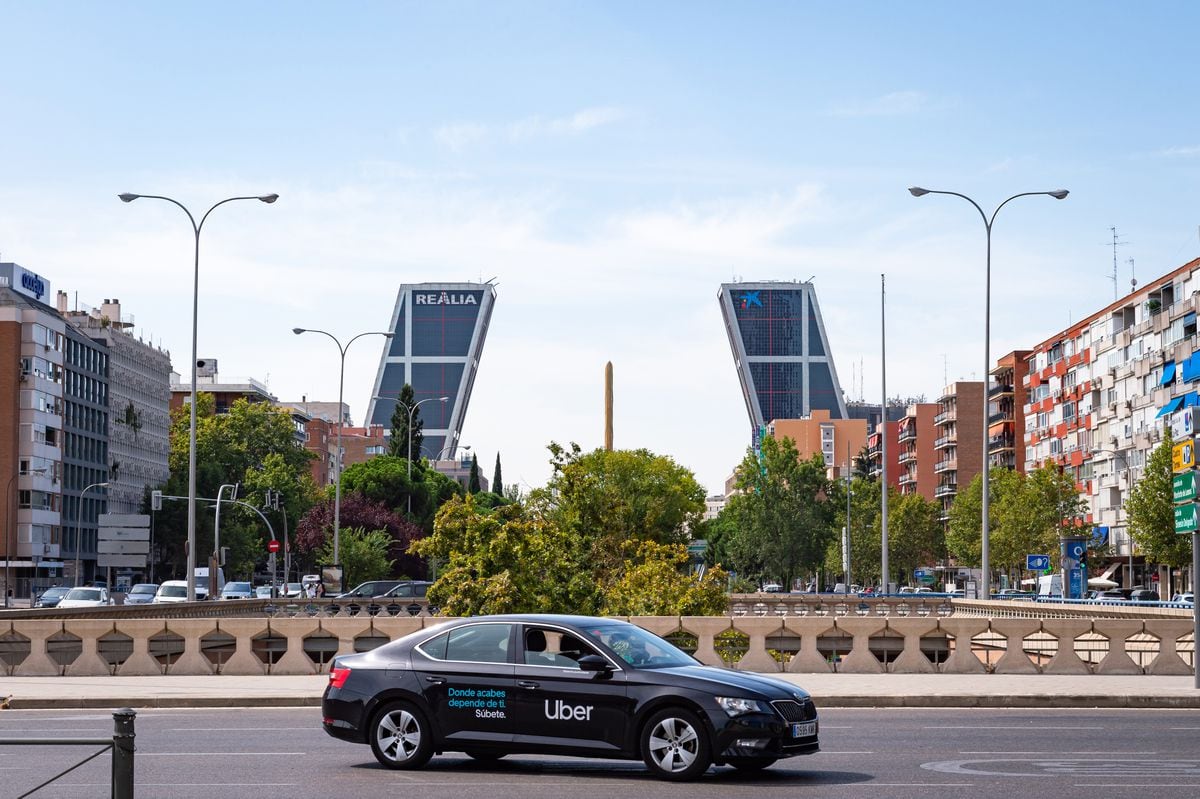Uber shareholders have often had the same feeling as users of its service when they see the driver deviate from the route and appear to take a detour.
After 15 years and tens of billions in losses, the journey to profitability is over.
The company founded in 2009 by Travis Kalanick and Garrett Camp is not only a global giant, but also a money-making machine.
In addition, Uber has a full tank of fuel to continue moving at full speed for the next few years.
“Initially, we were rapidly expanding around the world while making massive investments to build our position in the category.
Given those huge losses, many people wondered if Uber could ever make money.
Now Uber is stronger than ever, with exceptional growth and profitability,” CEO Dara Khosrowshahi explained this week in a conference with investors.
Uber accumulated losses of 31,675 million dollars (about 29,500 million euros at the current exchange rate) between 2014 and 2022. The red numbers were the constant, except for the mirage of an annual profit of 997 million in 2018 due to extraordinary capital gains.
The benefits of 2023 are real.
The company achieved a favorable operating result for the first time and that allowed it to close the year with a net result of 1,887 million dollars, after increasing revenues by 17%, to 37,281 million dollars.
The money that Uber moves is much higher: gross reservations grew by 19%, up to 137,865 million dollars.
“2023 was a turning point for Uber, demonstrating that we can continue to generate strong and profitable growth at scale,” said Khosrowshahi when presenting the results.
“After a difficult period during the pandemic and years of aggressive spending to gain market share, Uber has finally found its footing and is demonstrating maturity in its finances,” says eToro analyst Josh Gilbert.
“The company's long-term turnaround following the pandemic is finally starting to bear fruit,” says Thomas Monteiro, senior analyst at Investing.com.
“Mobility and delivery are growing strongly again, market share is increasing and ebitda continues to inflect,” Nikhil Devnaniy, an analyst at Berstein, summarized in a report for clients.
It's been a long road.
The initial service, launched two years after the iPhone hit the market, was initially called UberCab and was aimed at customers with high purchasing power.
Its growth and popularization was unstoppable despite the constant regulatory obstacles and the confrontations with the traditional taxi sector, which slowed its implementation in numerous markets and which has ended up surrendering to the giant.
Now, Uber has 235,000 taxi drivers on its platform in 33 countries around the world.
“I have been at Uber for almost 10 years and it is true that the relationship with the taxi has not always been friendly, but that relationship is changing,” said this Wednesday Jill Hazelbaker, head of Communications, Public Policies and Marketing for the group.
“We have welcomed iconic taxis from Hong Kong, Tokyo and New York to the platform.
And we are discovering that taxi drivers who accept rides with Uber are busier and earn more than those who do not," he added, before releasing a statement: "We have big ambitions to bring all the taxis in the world to the Uber platform, for example. "I'm so excited to welcome London's iconic black cab in late 2024."
Uber has gone off course many times in its 15-year history.
Kalanick bypassed taxi and car rental regulations to force his way through prices.
With it, Uber spied on competitors and used secret software to deceive regulators.
In the end, a succession of scandals over sexist practices, workplace and sexual harassment, poor working conditions for drivers, legal battles and other problems led to his resignation in 2017.
After a summer with no one behind the wheel, the company hired Khosrowshahi, the head of Xpedia.
The new driver headed to the stock market, where Uber debuted in May 2019 with a drop of 7.6% in the first session.
The doubts remained for months.
Just when he was beginning to gain favor with the market, the pandemic arrived.
The shares fell in March 2020 to half the $45 they were placed at.
The pandemic changed everything.
Mobility plummeted, but the company took refuge in the delivery service, Uber Eats, which took off with enormous force.
At the same time, it made layoffs and cut other costs.
It also put aside ambitious (and ruinous) plans to develop its autonomous taxis.
Paradoxically, that crisis helped Uber get in shape, diversify its business and fully commit to the multi-service platform model.
“The strategy is simple: create best-in-class products and amplify them with the power of the platform,” Khosrowshahi explained this week.
“As we have grown, that power has become even more evident.
Now, our platform gives us a simple, but significant advantage.
“We can attract customers at a lower cost and, at the same time, generate greater lifetime value than our competitors,” he added.
The idea is that the customer who takes an Uber taxi one day, orders food another day.
And when you order food at a restaurant, Uber can also offer to bring you a drink or a dessert purchased from the supermarket, or medicine from the pharmacy... With Uber Direct it distributes purchases of all kinds and with Uber Connect it is also a parcel company between individuals.
Added to that are tailored advertising offers, another booming business.
“The more products and services we add to the platform, the more data we will have and the more opportunities will be presented to us,” explains Khosrowshahi.
Uber, which has announced a $7 billion share buyback plan, is worth more than $150 billion and is trading at record highs.
Over the next three years, it expects annual growth in gross billing of 15% to 20% and EBITDA of 30% to 40% on average.
“The question of whether Uber could one day make money is already answered,” says Khosrowshahi.
Follow all the information on
Economy
and
Business
on
and
X
, or in our
weekly newsletter

